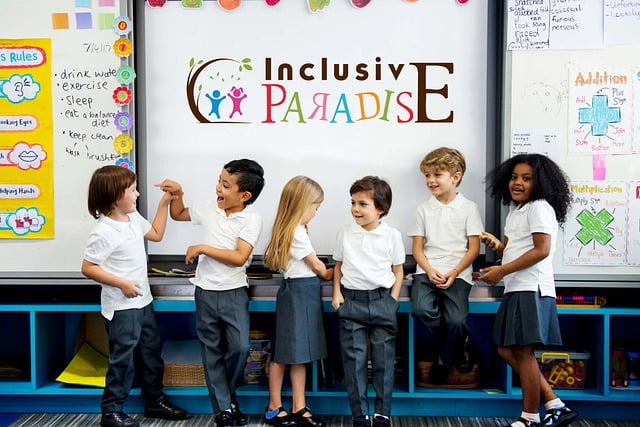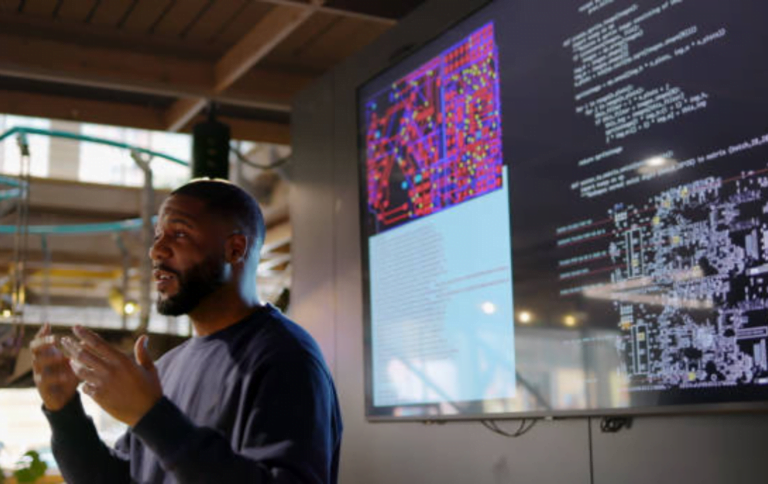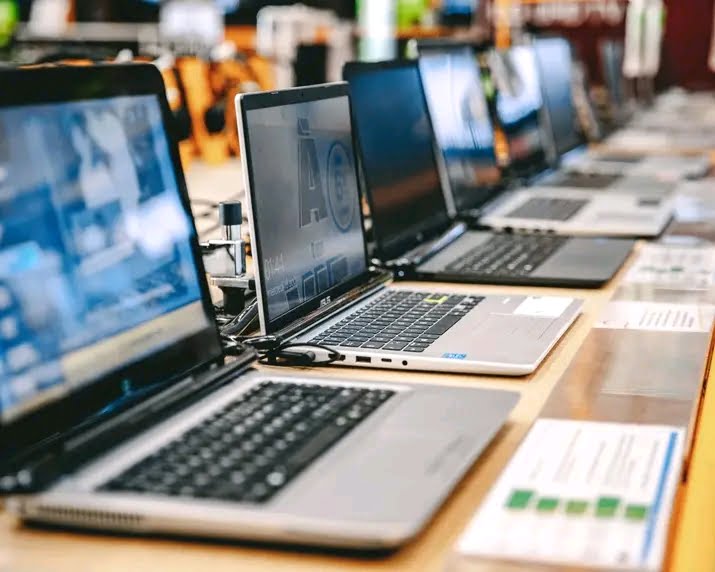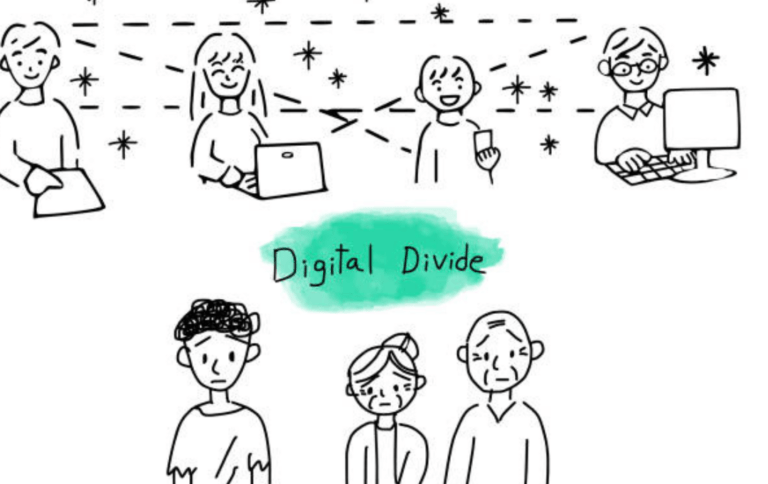Inclusive Education System: An Absolute Guide

Inclusive education system embodies a future for all children and students. The idea behind inclusive education is to have children of all types in the same classroom.
Currently, the education system has separate schools for children with different abilities. There are schools for students with disabilities and mental health conditions.
This means that schools have separated the types of learning given to different students. In the 1990s, students with disabilities used to go to different schools. These schools were later called disabled institutes.
Read: Inclusive Learning Program: Secrets To Why You Need Microlearning
Types of Inclusive Education System
Every student is unique and has their own specific needs. It is important to pick the right kind of inclusive education for your students depending on what each of them needs.
Mainstreaming
With the mainstreaming method, disabled students will start their education in a separate classroom away from the regular classroom.
If students are doing well in their own classroom, they can join the regular classroom if they are ready.
This way of doing things can be less scary for some students, and it helps them to slowly become a part of a classroom where everyone is included.
Partial Inclusion
This teaching style allows all students to learn and participate in the main classroom. However, partial inclusion means that some students who need extra help will learn in a different way outside of the regular classroom.
For students in a partial inclusion plan, most of their time will still be spent in the regular classroom. However, they will also have time outside of the regular class to get extra help from special education teachers.
Some of the extra help given may cause problems if done in the regular classroom, like speech lessons. Partial inclusion means that sometimes it is better for students to be separated into different classrooms to learn.
Full Inclusion
This teaching model believes that all students should be in the same classroom. A full inclusion model means that students with disabilities, whether obvious or not, will always be in the same classes as their peers and will do their schoolwork together.
If a school is using the full inclusion model, they need to keep a close eye on how well students are doing and make sure the plan is helping them. If a full inclusion plan is too much, a partial inclusion plan can be used instead.
Best Inclusive Education Strategies: How Does One Make Them?
The education program is part of UNESCO’s long-term plan. They want to make one educational system that everyone can use. The aim of this strategy is to make learning better and more accessible for everyone. It shows the various parts of learning. Each student has something valuable to contribute in the classroom. In this case, an inclusive education system allows for non-traditional education to be included.
- An inclusive education system means that everyone gets education, regardless of their background or abilities.
- Everyone should learn how to communicate using sign language.
- No student should be treated differently because of their health. Everyone should be able to learn and deserves the opportunity to do so.
How To Implement Inclusive Education System In Your School
It’s obvious that having a classroom where everyone is included is good for a lot of students.
It’s very important to give every student an equal opportunity to learn in a place that works best for them. Let’s see how we can make sure that everyone feels included in the classroom.
Diverse Marking Schemes
Marking work for all students in the same way is not always the best approach. Some kids may have difficulties with certain tasks or have trouble expressing their ideas in writing.
You can be more inclusive with your grading by judging the content and ideas separately from English and grammar, for instance. You can also evaluate how much someone tries by giving extra points.
When you give feedback to students, make sure it is easy for them to understand, and ask them if they understand your suggestions.
It can be helpful for students to look at other students’ work or attempts on tests, but they don’t need to compare or compete with their grades or feedback.
We don’t want to make students feel bad about themselves, which could make them go backwards and not do their best in homework and class.
You don’t have to turn grading and assessment into a competition for your learners. Comparing yourself to others might only make it harder for you to reach your untapped potential.
You might want to have different goals for students based on their abilities instead of having high expectations for students who are not doing well.
Adopt Lessons/Tasks
Sometimes, regular teaching isn’t the best for students who have obvious disabilities or struggle with learning.
We need to change the curriculum to fit the needs of these students and make the lessons more flexible. To make lessons more interesting and to keep students interested, you can make them more immersive.
A different way of learning that is more interesting might help people who have difficulty learning from reading. You can make your lessons more interesting by adding more videos and pictures.
You can also use educational games or hands-on activities to get students more involved. Many students enjoy learning while playing, which can make lessons more interesting for them.
It is important to understand your students and consider their specific needs when giving them educational material.
Ensure that all students are fully involved and actively taking part in the activities during your lessons.
If you have a problem getting students interested in the lesson, think about looking at what you want them to learn and try changing the way you teach them to see if it helps.
Cooperative learning
A good way to make sure everyone can learn in the classroom is to give tasks and activities that help students work together. When students learn together, they all get the chance to join in.
When you want to organize group work, you should choose fair groups instead of letting students choose for themselves.
In addition to letting students join something, they will also learn important social skills from each other. Group learning helps not only people with disabilities or behavioral differences, but also everyone else.
This promotes students to work with different people and encourages everyone to be included.
Specialised Training
To ensure that teachers are able to create the best learning environment, they need to have the right tools and training. If you are a teacher and you want to make sure all students feel included, it would be really helpful to learn new skills and get more training.
Courses and training about including all students or student differences can be very useful for learning tips, methods, and plans. Learning about topics like trauma awareness, autism, or special educational needs (SEN) can be very helpful. These courses can teach teachers how to help students who are going through difficult times.
Concerning Challenges
This kind of school system is dealing with a problem caused by society. Parents and teachers are unhappy with the conditions in the classroom. Parents are worried because it might impact how their children learn. Teachers are concerned because they don’t know enough to teach such different classes. In simpler terms, some parents are worried that learning sign language might not be needed for their child’s school work.
Benefits of Inclusive learning
- We can see that even though some people have criticized inclusive education, it also has many advantages. Sometimes, students with disabilities and other conditions feel left out and alone in society. These differences make people feel like they are not the same as others and not treated equally. These ideas can make the students’ mental health worse.
- Students need to talk to each other. Sign language can be useful for students in many situations, since they might meet people who use it in their everyday lives.
- All children feel safe and valued. Everyone can learn from one another. The parents are happier with how their child is being educated using inclusive methods. You feel like you belong.
- Children also learn how to work together and get along with others. This happens when people have to work and learn together. In inclusive schools, students are taught that everyone has things they are good at.
- We have some flaws too, besides our strengths. This doesn’t mean we should stay away from other people. To become stronger, we should share with each other. It also helps students become more accepting and understanding of each other.
- The teachers at this school teach students to see things from all perspectives. This faculty teaches children to appreciate and be kind to other people.
Inclusive Learning Schools
Inclusive schools are schools that provide inclusive education. To achieve this, they are linked to the local community and the education center.
They work together with the parents and people in the community as a team. This partnership allows them to use one way of educating everyone in the system. These schools have different subjects to study.
They provide specialized subjects for shared learning, so that all students can participate in the same classes. They give good services to the students and their parents.
They create the courses to help students get along and learn from each other.
Teacher’s Roles
Teaching students in classes with different backgrounds requires teachers to have a big responsibility. Special education teachers learn different teaching methods.
The teachers need to make sure that the students are learning what they are teaching. Teachers help students with their learning and encourage them to work hard to reach their goals.
At the same time, they make sure that the students behave properly in the classroom. They also teach ways to learn.
Teachers also use criteria to evaluate students’ progress and help them improve their skills in order to reach their goals.
Promote Inclusive Learning
There are also other ways to support and encourage a system where everyone can learn together.
- Encourage people’s openness to the idea.
- Tell others about this system.
- Sign up for a school or organization that promotes education for everyone. Welcome and appreciate the differences among the students at that place.
- Make sure everyone gets along and creates an environment that helps learning.
- Avoid unfairly treating or judging others.
Conclusion
The inclusive education system is not the same as the traditional one. Any student, regardless of their level of intelligence, can join these institutes.
The adaptive courses make it easier for them to study together. Students have the opportunity to learn by doing things themselves.
They also discover that strengths and weaknesses are natural parts of life. They learn to respect and not to belittle anyone. The teachers and staff at inclusive schools need different kinds of training.
They need to learn how to work with groups of people who have different abilities. Inclusive learning helps students have a great education together, and we should encourage it more.
It will make education and human development better worldwide.







